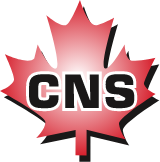For upstream services, nitrogen is preferred to minimize the risk of combustion, reduce costs, and help maintain control. Onsite nitrogen generation with our mobile equipment helps reduce operational costs and leads to a quicker startup time.
We provide nitrogen services to support upstream operations, including (but not limited to):
MPD (Managed Pressure Drilling)
The main factor of MPD is ‘precise control’, which is required to adjust the annual pressure profiles downhole. When there is a narrow margin between the pore pressure and fracture-pressure gradient profiles, MPD is the preferred method of drilling to mitigate the costs and risks associated with conventional drilling systems.
Mobile nitrogen for MPD:
- Keeps a low-oxygen atmosphere
- Eliminates the risks and hazards of delivering bulk nitrogen in high-pressure gas cylinders onsite
- Provides a steady flow of nitrogen as we extract nitrogen from the atmosphere
- Lowers operational costs by eliminating the logistics associated with traditional nitrogen delivery
UBD (Underbalanced Drilling)
Nitrogen is crucial for UBD because it prevents combustion and dangerous reactions between oxygen and hydrocarbons. Our mobile nitrogen services add nitrogen extracted from the atmosphere to the drilling fluid that is pumped directly down the pipeline. Nitrogen effectively displaces oxygen and reduces corrosion issues.
Although air and natural gas can be used for underbalanced drilling (UBD), nitrogen is preferred for its minimal risk of downhole fires, a higher level of control, and its cost-effectiveness.
Free Differentially Stuck Drill Pipe or Casing
Generally, differentially stuck Drill Pipe or Casing occurs when the hydrostatic pressure exceeds pore pressure. The over-balance drives the static Drill Pipe or Casing into the thick mud cake and immobilizes it.
To free differentially stuck Drill Pipe or Casing, we inject nitrogen between the drill pipe and the cased wellbore, which:
- Effectively displaces mud volume in a gradual, controlled, and safe manner.
- Is a cost-effective solution and the least disruptive technique compared to other conventional methods.
- Can get your operations back up and running quickly, reducing costly downtime.
- Maintains unchanged hydrostatic pressure conditions.
- Controls hydrostatic pressure changes inside the wellbore.
- Reduces differential pressures around the stuck part as intended.

